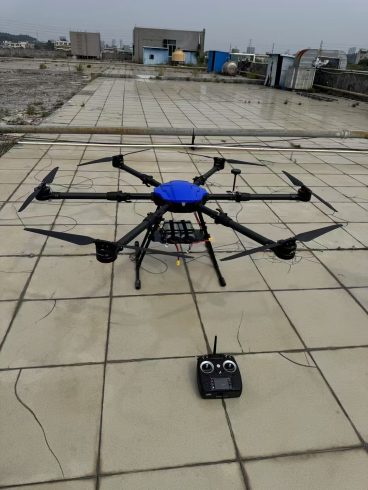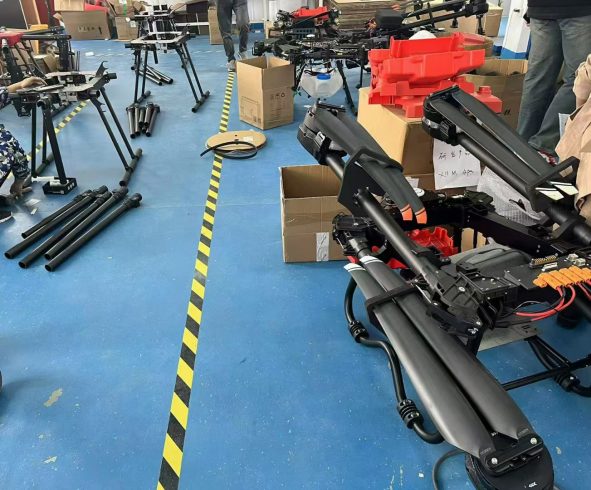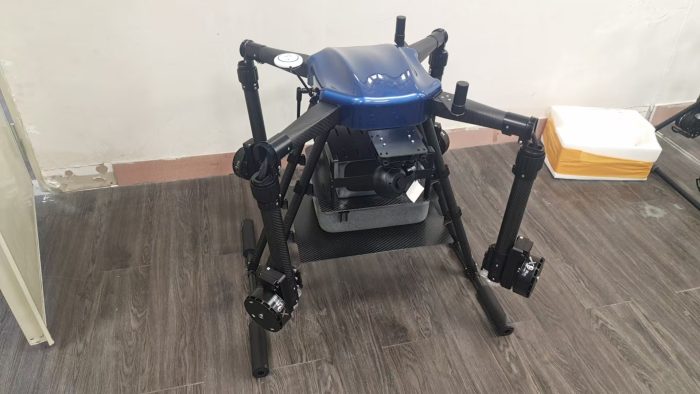![图片[1]-Using Drones for Corn Spraying: Enhancing Efficiency and Crop Health in Modern Agriculture-msoen](https://www.msoen.com/wp-content/uploads/2025/04/164e113f97214114-576x1024.jpg)
Explore how drones revolutionize corn spraying with precision agriculture, reduced chemical waste, and time-saving automation. Learn key considerations, benefits, and best practices for optimizing maize cultivation.
Introduction: The Rising Demand for Efficient Corn Spraying Solutions
Corn farming faces escalating challenges, including labor shortages, rising input costs, and the need to combat pests and diseases in dense, fast-growing crops. Traditional methods like tractor-mounted sprayers or manual application struggle with uneven coverage, high fuel expenses, and crop damage. Using drones for corn spraying offers a precision-driven alternative, adapting to large-scale fields while protecting yields and reducing environmental impact. This article dives into how drones transform corn cultivation, from early growth stages to harvest readiness.
- Why Drones Excel in Corn Spraying
Corn fields present unique demands: towering stalks, expansive acreage, and critical growth windows. Drones address these challenges by:
- Navigating Crowded Canopies: Low-altitude flights penetrate dense foliage for targeted application.
- Adapting to Growth Stages: Adjust spray parameters for seedlings, tasseling, or kernel-fill phases.
- Minimizing Soil Compaction: Avoid tractor wheel ruts and root damage in wet conditions.
- Key Advantages of Drone Spraying for Corn A. Precision and Reduced Chemical Waste
- Multispectral Sensors: Detect pest hotspots (e.g., corn borers) or nutrient deficiencies, enabling variable-rate spraying.
- Directed Nozzles: Swirl or turbo nozzles ensure even coverage on tall, vertical stalks.
- 30–50% Less Chemical Use: Studies show drones reduce pesticide use by avoiding wind drift and overlapping passes. B. Time and Labor Efficiency
- 24/7 Operation: Autonomous drones work overnight or during low-light hours to avoid heat stress on operators.
- Coverage Speed: A drone can spray 50 acres in 2 hours—far faster than ground-based equipment. C. Cost Savings
- Lower Fuel and Maintenance Costs: Drones consume 80% less energy than tractors.
- Reduced Equipment Depreciation: Eliminate wear-and-tear from heavy machinery in muddy fields. D. Environmental Benefits
- Lower Emissions: Zero fuel combustion reduces carbon footprint.
- Waterway Protection: Avoid runoff into nearby streams by precisely targeting application zones.
- Essential Features for Corn-Specific Drone Sprayers A. Robust Build for Rugged Conditions
- Weatherproofing: IP67-rated drones withstand rain, dust, and high humidity during critical pollination phases.
- High-Payload Tanks: 30–50L capacity for large fields, with quick-refill capabilities. B. Advanced Spraying Systems
- Hydraulic Nozzles: Prevent clogging in dusty cornfields.
- AI-Powered Flight Control: Adjust speed and spray intensity based on crop height and density. C. Smart Navigation Tools
- RTK GPS: Centimeter-level accuracy for repeatable flight paths in uniform corn rows.
- Obstacle Avoidance: LiDAR sensors detect power lines, trees, or machinery in sprawling fields.
- Applications Across the Corn Growth Cycle
- Early Growth (V3–V6 Stages): Early fungicide applications to prevent gray leaf spot.
- Tasseling (VT Stage): Target ear mold and southern rust with systemic insecticides.
- Pollination Phase: Minimize drift to protect pollinators like bees by restricting flights to pre-dawn hours.
- Pre-Harvest: Desiccant sprays to accelerate drydown for timely harvesting.
- Overcoming Challenges in Corn Spraying A. Managing Crop Height and Canopy Density
- Altitude Adjustments: Fly 1–3 meters above the canopy for penetration, increasing as stalks grow taller.
- Swath Width Optimization: Match nozzle patterns to row spacing (e.g., 30-inch rows require narrower swaths). B. Weather Sensitivity
- Humidity Management: Schedule flights during cooler mornings to reduce evaporation.
- Wind Speed Monitoring: Halt operations if winds exceed 10 mph to prevent off-target drift. C. Maintenance and Safety
- Post-Flight Cleaning: Rinse nozzles and tanks to prevent chemical buildup, especially after using glyphosate or atrazine.
- Geofencing: Program no-fly zones around rural roads or residential areas.
- Future Innovations in Corn Drone Spraying
- Swarm Technology: Coordinated fleets of drones for 24-hour spraying in massive industrial farms.
- IoT Integration: Soil moisture sensors trigger sprays only when conditions are optimal.
- Autonomous Refueling: Hydrogen-powered drones with in-field refueling stations for continuous operation.
Conclusion: Elevate Corn Yields with Smart Drone Solutions
Drones are no longer a luxury—they’re a necessity for competitive corn farming. By combining precision, efficiency, and sustainability, these systems empower growers to protect yields, reduce costs, and safeguard ecosystems.
Call to Action:
Ready to optimize your corn spraying strategy? Explore our AI-driven agricultural drones engineered for maize cultivation. Contact us today to transform your farm into a model of innovation!












暂无评论内容